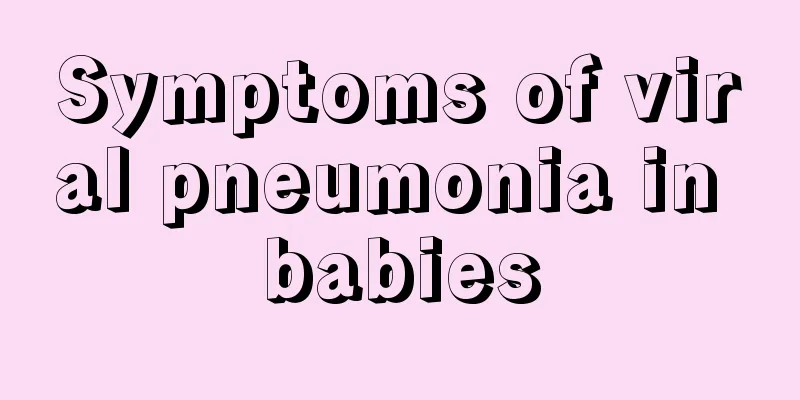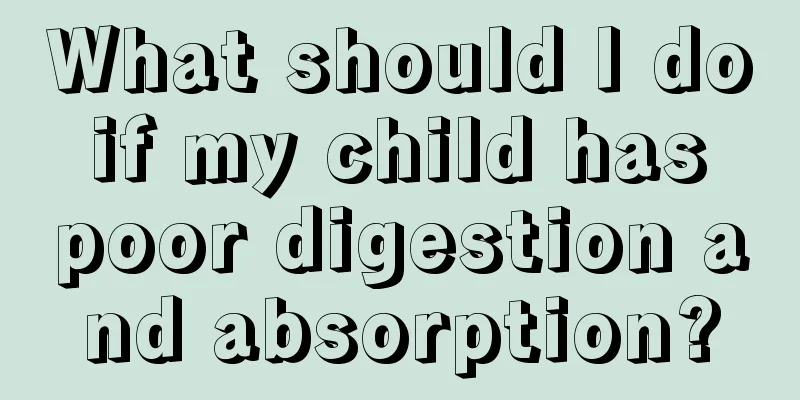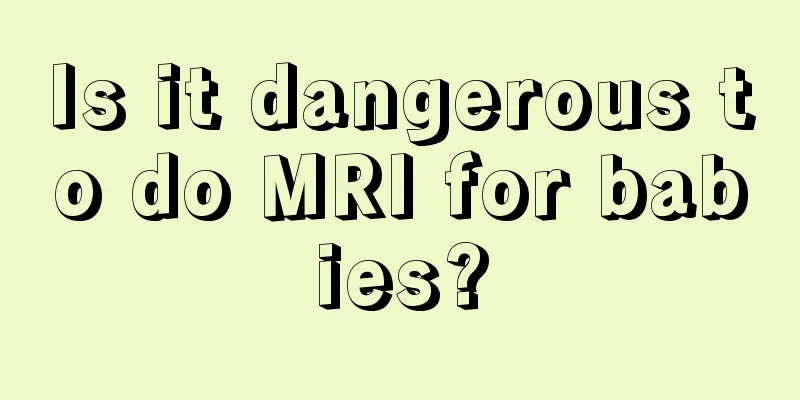Symptoms of viral pneumonia in babies

|
Viral pneumonia in babies is very serious. If a baby has this condition, we need to pay a lot of attention. Our parents all care about their children. I know you all want your children to be healthy, so we need to know a lot of things, so we can't ignore them! So let's take a look at some specific situations of viral pneumonia in babies with the editor! 1. The main symptoms of pneumonia in children are fever, cough, shortness of breath and dry nose. The main cause of the disease is due to wind-cold or wind-heat. In addition, during the course of some other rash diseases, if the child's vital energy is weak, this disease may also occur or be secondary to it. 2. Pneumonia is the most common respiratory disease in children. Infants and young children under 3 years old are more likely to suffer from pneumonia in winter and spring, and pneumonia caused by bacteria and viruses is most common. Pneumonia in infants and young children, regardless of what pathogen causes it, is collectively referred to as bronchopneumonia, also known as lobular pneumonia. 3. Symptoms of pneumonia in children The main symptoms of pneumonia in babies are fever, cough and wheezing. The onset of pneumonia can be acute or slow, and usually occurs a few days after an upper respiratory tract infection. The first symptom is fever or cough, with body temperature generally between 38 and 39 degrees Celsius. Adenovirus pneumonia can cause high fever for 1 to 2 weeks. Weak babies may not have a fever or even have a body temperature lower than normal. There may be coughing, choking or milk leaking from the nose. Common symptoms include poor appetite, poor spirits, irritability, and restless sleep. Severely ill children may experience symptoms of breathing difficulties such as flaring of the nose and bluish discoloration around the mouth, and may even suffer from respiratory failure and heart failure. The sick children may also experience digestive system symptoms such as vomiting, abdominal distension, and diarrhea. 4. How to distinguish pneumonia from cold in children Pneumonia in children has an acute onset, severe condition, and rapid progression, and is a disease that threatens the baby's health and even life. But sometimes it is similar to the symptoms of children's colds and is easy to be confused with them. Therefore, it is necessary for parents to master the knowledge of distinguishing these two common childhood diseases so as to detect childhood pneumonia in time and treat it early. It is not too difficult to identify them. Here are a few tips: 1. Take body temperature Most cases of pneumonia in children are accompanied by fever, which is usually above 38°C and persists for more than 2-3 days. If antipyretics are used, the fever can only be reduced temporarily. Children also have fever when they have a cold, but the temperature is mostly below 38°C and lasts for a shorter period of time. Antipyretics are more effective. 2. Check whether coughing and breathing are difficult Children with pneumonia usually have cough or wheezing, which is severe and often causes breathing difficulties. Difficulty breathing is manifested as shortness of breath, flaring of the nostrils, and purple lips, indicating that the condition is serious and should not be delayed. Coughs or wheezing caused by colds and bronchitis are generally mild and do not cause difficulty breathing. 3. Look at the mental state When babies have a cold, they are generally in better spirits and are able to play. When children suffer from pneumonia, they are in a poor mental state and are often irritable, crying, or drowsy, having convulsions, etc. We hope that you can understand a lot here. This is the end of the symptoms and related introduction of baby viral pneumonia. Then it can be used. We all hope that our children are healthy, so we need to understand these clearly and prescribe the right medicine. We can't ignore it! Then the editor will introduce it here. I hope your children are healthy! |
<<: How many days does it take for the baby to be successfully weaned?
>>: What should I do if my baby has BCG abscesses?
Recommend
How tall is a one year and five month old baby
During the baby's growth and development proc...
What should I do if my baby is allergic to medicine?
If newborn babies are not adapted, they may get s...
Is bronchoscopy painful for babies?
If your baby coughs frequently when he is young, ...
Baby's armpit temperature
Since the regulatory function of a newborn baby i...
What are the symptoms of enlarged adenoids in children's nose
Adenoid hypertrophy is a common symptom in childr...
How to solve the baby's cough at ten months old
Ten months is a special period for babies. Babies...
What to do if your child has smelly feet
Smelly feet are a very common problem. There are ...
Don't fall into these treatment misunderstandings for children with amblyopia
Nowadays, many parents are often too busy with wo...
How to deal with a baby's fever after vaccination
DPT is a very important type of vaccine. It can e...
How to treat lymph nodes in babies?
Many babies have problems with their bodies, so t...
Can children drink milk tea?
Milk tea is a drink that is becoming more and mor...
What medicine is better for children with itchy throat and cough?
Children's health is a matter of great concer...
What medicine should children take for stomachache?
When we were children, we often had discomfort of...
What should I do if my two-year-old baby has a stuffy nose?
If a two-year-old baby has a stuffy nose, it will...
6 months premature
Although premature birth is an abnormal birth phe...









